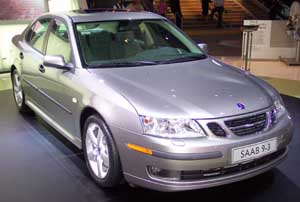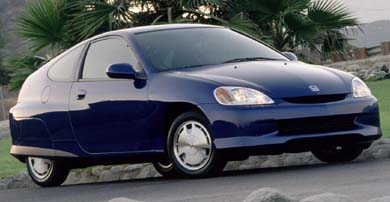
Above: One of the cars that Ford could sell in North America: the subcompact Ka, built in Poland.
[Cross-posted] Earlier this year, before we found out just how bad Detroit’s financial situation was, I wrote a paper for The Journal of the Medinge Group called ‘Saving Detroit, by Not Making the Same Old Mistakes’. My advice: don’t keep cutting back, because that would lead Detroit down the same path that British Leyland followed when things got dire there. Manage your brands. And stop the internal politicking.
But things are far worse today than when I wrote that paper. The Big Three are talking about running out of money to stay in business. And yesterday, the US Senate blocked the bail-out plan that Congress had OKed.
As the car bosses went to Washington, DC to ask for a bail-out—or, more accurately, loan guarantees and a credit line—few in the media have dealt with what the Big Three need to do now that things are so dire. Paul Ingrassia, in December’s Condé Nast Portfolio, is one exception, discussing the Chapter 11 option. I still dislike the idea of reducing brands because I saw what it did to BL; and when people bring up that Toyota only has one brand, or one line in a segment, they do so with a very narrow view.
Toyota has three brands Stateside; and in its own domestic market I don’t know of any size segment where it does not field multiple models, apart from the very top end where it has the Century. In Japan, it has numerous sales’ channels, which have different models, and those channels are almost treated in the same way as GM treats its divisions.
Today, I wrote an opinion piece, which I put on to CAP Online—it’s too long for here, and it’s not brand-focused enough for something like The Journal—where I look at what the model ranges in the US should look like.
There are a few things I missed, such as what to do with Mercury, because I had covered that before. The emphasis was exposing something car buffs knew, but few in the financial press do: that GM and Ford already have world-class models in their ranges, that they have spent billions developing. Politicking inside Detroit simply prevents these models being sold to Americans.
We are talking about cars that make Corolla, Camry, Civic and Accord look second-class.
But Detroit’s arrogance and its continued belief that it can pull the wool over American consumers’ eyes by pretending that these cars do not exist—it even pretends, for the most part, that Corolla and Civic don’t exist—has meant that these models never see the showroom floor in the US and Canada. (Some, however, appear in México.) American buyers get second-rate stuff, while these same American-owned companies sell some excellent cars abroad.
There are even segment-busting models that I reckon US buyers would love, such as the Brazilian Ford EcoSport, a subcompact SUV, or the Chevrolet Meriva, also from Brazil—think of a practical minivan on a subcompact platform and great gas mileage to boot.
Chrysler has the option of partnering with firms that would love to have a US presence to fill segments it has failed to compete in. Peugeot of France, which owns its old European operations, could sell the 207 with a Dodge badge. The grille even reminds me a bit of the old Chrysler Concorde’s.
Opel’s Insignia, Car of the Year in Europe, sells in Red China as the Buick Regal—which it could do in the US, too.
And before you argue that European cars would be overpriced or the exchange rates would be unfavourable, the fact remains that Detroit had plenty of opportunity to tool up for them years ago, or to use some of the Mexican and Korean plants to supply the North American market.
I’ve said on this blog before that if I could forecast the fuel crisis at the beginning of the century, there’s no way that the Whiz Kids in Detroit’s employ wouldn’t have—but bosses chose not to listen and to keep the institutionalized little duchies as they were.
And in terms of how the brands should be run—well, I’ve stayed pretty consistent on these strategies for the last decade, and wrote warnings each time there was a wrong move. But, I’m not a Detroit insider. And politics-as-usual in Motown’s boardrooms have taken us to this point today—three decades after Japan, Inc. gave Detroit a major wake-up call.
While some of my opinion piece’s ideas are impracticable, and I speak in ideals, they do force Detroit—and Washington, and the American people—to look at just how the Big Three have operated without any notion of humility or consumer awareness for a long time.
In 2009, there is no such room for indulgences. We’re talking about emergency measures, and what Detroit needs to do in a stop-gap fashion while it genuinely restructures. I don’t mean piddly, lip-service types of rebranding within the firms, but serious, ground-up strategies that the current boards have shown little stomach to carry out so far.
Links
• PDF version of ‘Save Detroit—Now’ (click here for HTML version)
• PDF version of earlier paper, ‘Saving Detroit, by Not Making the Same Old Mistakes’ (click here for HTML version)








